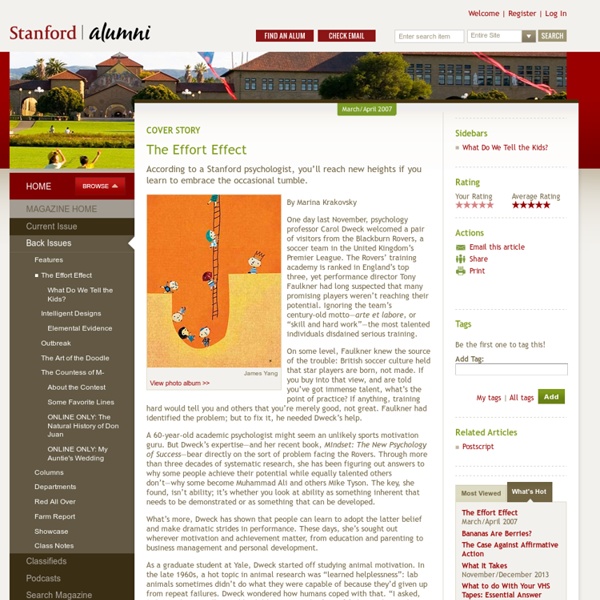March/April 2007 > Features > Mind-set Research

From Defeat, Rejection to Success
From Now On: The Newsletter of The Efficacy Institute
An idea for the day: Accepting responsibility for the outcomes of the children in one's classroom, whatever their backgrounds and whatever baggage they bring with them, is the absolute requirement for learning how to effectively teach kids living in difficult circumstances. This ethic of responsibility is clear when we talk with our most effective teachers. Where does it come from? And why is it not evident in all? Their initial answers usually cluster around the politically correct 'ours,' and one or two people, often primary grade teachers, will blurt out 'mine.' "What about 'mine'," I say, "Then who's responsible for them?" People acknowledge the implication of this answer: "I accept responsibility for what happens to the children in my class, whether the parents behave responsibly or not, and whether or not my colleagues join me in this responsibility." So the first question is: Whose kids are these?
Related:
Related:



